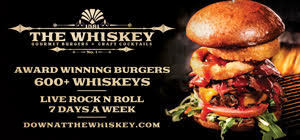![]() Every once in a while, the stars align, the moon is full, and everything in the world seems right. You might not be able to explain it, but something magical is happening and suddenly, in between delectably juicy bites of your baby lamb tenderloin and sips of a pretty darn decent Chianti, you have a flavor epiphany. This is it! You think to yourself. This is what all those Wine Spectator folks have been talking about! A total eclipse of the sun: the light goes off; there is darkness. And then, bang! It hits you. The sun comes back out and it seems as if it has never before shone so brightly. You, my friend, have just experienced a perfect pairing.
Every once in a while, the stars align, the moon is full, and everything in the world seems right. You might not be able to explain it, but something magical is happening and suddenly, in between delectably juicy bites of your baby lamb tenderloin and sips of a pretty darn decent Chianti, you have a flavor epiphany. This is it! You think to yourself. This is what all those Wine Spectator folks have been talking about! A total eclipse of the sun: the light goes off; there is darkness. And then, bang! It hits you. The sun comes back out and it seems as if it has never before shone so brightly. You, my friend, have just experienced a perfect pairing.
Seriously, though. Does this ever truly happen? Sure, most food and wine lovers can recount with razor-sharp clarity the details of their first or finest perfect pairing moment. But for the cynical masses, which just happen to include a specific wine blogger, this may not be entirely how it goes. Sometimes a meal and a wine go very, very nicely together. Sometimes the combination is just plain interesting, and sometimes you regret having not trusted your instincts, rather than allowing the server to choose your bottle for you. On the other hand, sometimes a wine hits all the right notes on its own and delivers exactly the goods you ordered.
Most recently, this happened with the Pazos de Lusco Zios Albarino, 2007 from Rias Baixas, Spain. There seems to be something almost perfect about this wine. Everything desirable is present: just the right amount of complexity, nice balance between roundness and sharp acidity, fine structure in the mouthfeel. It is not often this happens, and it is not easy to explain why this is. A good place to start is probably with the argument that this is just a matter of opinion, kind of like choosing a mate we find most attractive. Our eyes respond positively to certain facial features and negatively to others, just as our taste buds respond to food. And these features and flavors don’t necessarily have to achieve perfect symmetry or balance. In fact, sometimes it is the slight imperfections of a person which most intrigue us. After all, some of us like a big nose.
But supermodels exist for a reason, and not just to crush the self-esteem of the physically inferior common folk that make up the majority of our population. When it comes to physical perfection, it’s all in the genes. And in the oenological, world there really does exist a perfect formula for producing and extracting superior wines. The problem is, nobody really knows what this formula is, which makes a perfect wine impossible to copy. When it comes to shaping a wine, there are simply too many elements involved that occur outside human control. But there is beauty in these unbridled elements as well. This is part of what makes wine so exciting. The game could change at any time, for any varietal, in any region. This is why what is considered a superior wine often changes from year to year, and from region to region. Of course there are some consistent front-runners, often because the winemakers in these regions have more experience, operate within time-honored and tested traditions, and understand the intricacies of why certain grapes do so well there. Consider these front-runners the Bela Karolyi of winemakers. His gymnasts were the best because he was the best at coaching and training them. He had good athletes fostered in the right environment, and given the right elements they needed to become great.
Perhaps this symmetry just so happened to result from a perfect storm of circumstances surrounding the 2007 Zios Albarino. Perhaps Rias Biaxas has the perfect terroir for growing Albarino, which is why it is so well known for the grape, and vice versa. Perhaps the weather that year was especially complimentary to the grapes from which the Zios was made. And perhaps the fact that this particular Albarino was aged on its lees (much like chardonnay and Champagne) helped to impart deeper, richer complexity. Maybe the fact that it was also aged in steel barrels, allowing the wine to retain its acidity, helped it achieve its wonderful balance between ripe, round fruits like apricot and peach, and notes of bright citrus. Specifically (and most intriguingly,) the nose smells of lemon custard. The acidity hits right in the middle, and the finish is lush and creamy, but clean enough that it avoids being cloying or buttery.
Coming soon to Eola Wine Company for $9 a glass/$36 a bottle, the Zios is an exceptional example of this already attractive varietal, available at an equally attractive price.
Sometimes things just feel right. Some people might be offended by a potent perfume, or turned off by a full body. Others might prefer features like skinny legs and bracing acidity. But whether the subject is wine or women matters not. What matters is that when the stars are aligned, the mood is right, and the juices are flowing, the most ordinary circumstances can result in pure magic.
{fblike}










